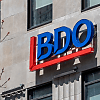8 key trust compliance activities to consider at EOFY
If you use trusts as part of your business or personal investment structure, there are some important considerations and actions required before the 2024 financial year comes to a close. Our experts have identified eight areas to consider to ensure your trust is operating as intended.
1. Review the trust deed
The trust deed should be reviewed with a particular focus on specific definitions, and the trustee’s powers regarding the distribution of trust income and capital.
2. Prepare a valid income distribution resolution on time
The trustee of a trust is required to make a distribution resolution by the end of the financial year, outlining the beneficiaries to receive distributions and details regarding those distributions. This is generally in writing.
3. Account for streaming of capital gains and franked dividends
Where the trust deed does not prevent streaming, capital gains and franked distributions may be separately accounted for and distributed to specific beneficiaries. Streaming of other types of income may not be effective to stream attached tax attributes to specific beneficiaries, for example, streaming of foreign income will not result in the streaming of foreign income tax offsets.
4. Carefully plan for corporate beneficiaries
If trust distributions are to be made to corporate beneficiaries, careful planning is required if it is intended the distribution is to remain unpaid. In particular, consider the potential application of Division 7A to deem the unpaid trust entitlement to be a loan from the company. Division 7A broadly applies to treat as unfranked dividends, loans and payments made to shareholders and associates of private companies, in certain circumstances.
5. Consider making family trust elections
If the trustee of a discretionary trust wants to claim carried forward tax losses or bad debt deductions or receives franked dividends, it may need to make a family trust election (FTE) in order to claim the loss/bad debt deductions or pass on the franking credits to beneficiaries. An FTE has the effect of defining the trust with reference to the family group of a primary individual. Where an FTE is in place, care is required, as adverse tax consequences may arise where distributions are made to individuals or entities who are not part of the ‘family group’.
6. Assess if Section 100A applies
Where there is an agreement for the beneficiary of a trust distribution to allow the benefit of the distribution to be provided to someone else, Section 100A may apply, which results in the trustee being assessed on the distribution at 45 per cent in such situations. Refer to recent ATO guidance.
7. Consider TFN reporting for closely held trusts
Trustees of resident discretionary trusts, family trusts and other closely held trusts should obtain TFNs from beneficiaries and report all new beneficiaries’ TFNs to the ATO, per ATO guidance.
Where beneficiaries of closely held trusts do not provide their TFN to the trustee of the trust, the trustee is required to withhold and remit tax to the ATO. When the tax is withheld, the trustee must lodge an Annual TFN withholding report with the ATO each year. Reports for the 2024 financial year are due by 30 September 2024.
8. Familiarise yourself with the changes to income tax return disclosures
The ATO has added further tax return disclosures regarding trust distributions made to beneficiaries including:
- Trust income tax return – additional disclosures in the ‘statement of distribution’ within the trust tax return, particularly regarding capital gains.
- Beneficiary tax returns – a new trust income schedule will be included in beneficiary income tax returns including disclosure of details regarding trust income received.


